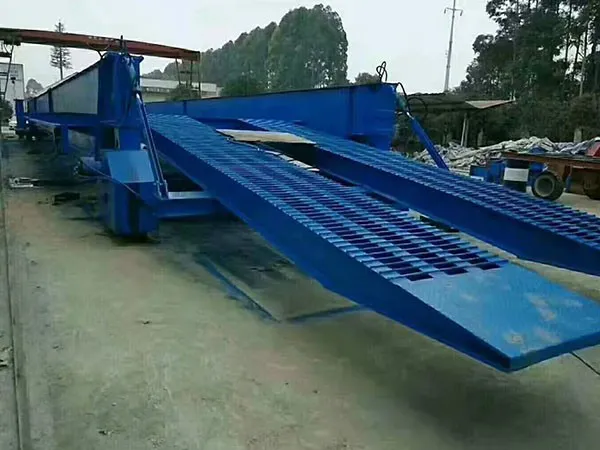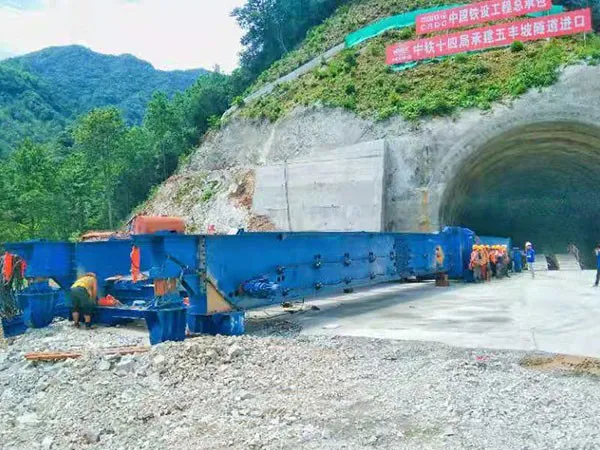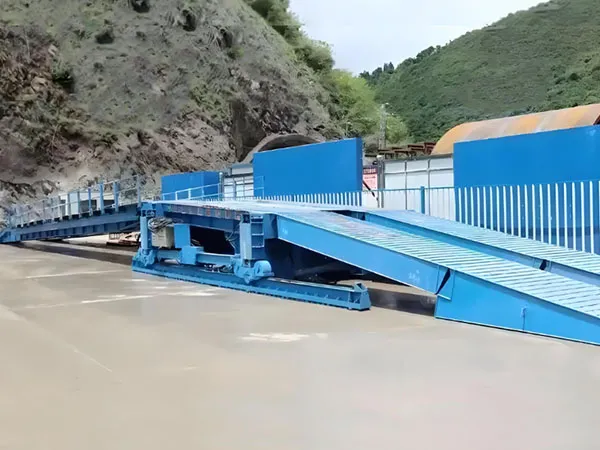Maintaining inverted bridge formwork is crucial for safety and for ensuring the quality of the concrete structure. This involves a systematic approach that includes regular inspection, proper cleaning, and correct storage and handling.

Detailed Drawings: Before starting, have detailed drawings that show the formwork's dimensions, materials, support system, and assembly sequence.
Material Selection: Choose high-quality, durable materials suitable for the expected loads and environmental conditions.
Load Calculations: Accurately calculate all potential loads, including the weight of wet concrete, rebar, workers, and equipment, to ensure the formwork can safely support them.
Safety Factors: Incorporate appropriate safety factors into your design to account for unforeseen circumstances.
Pre-fabrication: Whenever possible, pre-fabricate large sections of the formwork on the ground. This allows for better quality control and faster, safer installation.
Component Inspection: Before assembly, thoroughly inspect all formwork components for damage, defects, or wear. Replace any faulty parts.
Cleaning: Ensure all surfaces that will be in contact with concrete are clean and free of debris, rust, or old concrete.
Level and Plumb: Erect the formwork accurately, ensuring it is level, plumb, and true to the specified dimensions and alignment.
Secure Connections: All connections, including bolts, clamps, and ties, must be securely fastened to prevent movement or displacement during concrete pouring.
Proper Shoring and Bracing: Install an adequate amount of shoring and bracing to support the formwork's weight and the concrete's pressure. The supports should be evenly distributed and firmly seated.
Access and Working Platforms: Provide safe access points and stable working platforms for workers to install rebar, concrete, and inspect the formwork.

Monitor and Inspect: Continuously monitor the formwork during concrete placement for any signs of deflection, bulging, or leakage.
Controlled Pouring: Pour concrete in a controlled manner, at a rate that doesn't overload the formwork. Avoid dropping concrete from excessive heights, which can cause impact loads.
Vibration Control: Use vibrators carefully and avoid over-vibrating, which can put excessive pressure on the formwork and lead to segregation of the concrete.
Immediate Repairs: Address any issues like leaks or loose connections immediately. Have spare materials and tools readily available for quick repairs.
Curing Period: Allow the concrete to cure for the specified period before attempting to strip the formwork. The curing time depends on the concrete mix, ambient temperature, and structural requirements.
Gradual Stripping: Strip the formwork gradually and systematically, starting with non-load-bearing components. Avoid sudden impacts or prying actions that could damage the concrete.
Inspection After Stripping: After stripping, inspect the concrete surface for any defects, such as honeycombing, spalling, or irregularities, and plan for necessary repairs.
Cleaning: Thoroughly clean all formwork components immediately after stripping to remove any adhering concrete.
Repair and Refurbishment: Repair any damaged formwork panels or components. For wooden formwork, this might involve patching or replacing sections. For steel or aluminum, it could involve straightening or welding.
Storage: Store formwork components properly in a dry, protected area to prevent warping, corrosion, or damage. Stack them neatly and securely.
Release Agents: Apply a suitable form release agent before each use to prevent concrete from sticking to the formwork and to facilitate easier stripping.
Regular Inspection: Before each reuse, inspect all components again for wear and tear, especially connections and bearing surfaces.

Personal Protective Equipment (PPE): Ensure all workers wear appropriate PPE, including hard hats, safety glasses, gloves, and safety footwear.
Fall Protection: Implement fall protection measures, such as guardrails, safety nets, or personal fall arrest systems, when working at heights.
Competent Personnel: All formwork design, erection, and maintenance should be overseen by experienced and competent personnel.
Risk Assessments: Conduct thorough risk assessments at every stage of the formwork process and implement control measures to mitigate identified risks.
By following these guidelines, you can ensure the safe and effective maintenance of inverted bridge formwork, leading to high-quality concrete structures.
Gaofei
Address: 200m east of tulip garden, group 12 of zhangling community, hongshan street office, hongshan town, xigong district, Luoyang
Tel: +8616638856888
Contact: Gaofei Huang
Mobile: +86-18637923976
Phone: 0379-80881719/ 0379-60162687
QQ: 286827457
E-mail: gaofei@gf-bridge-tunnel.com